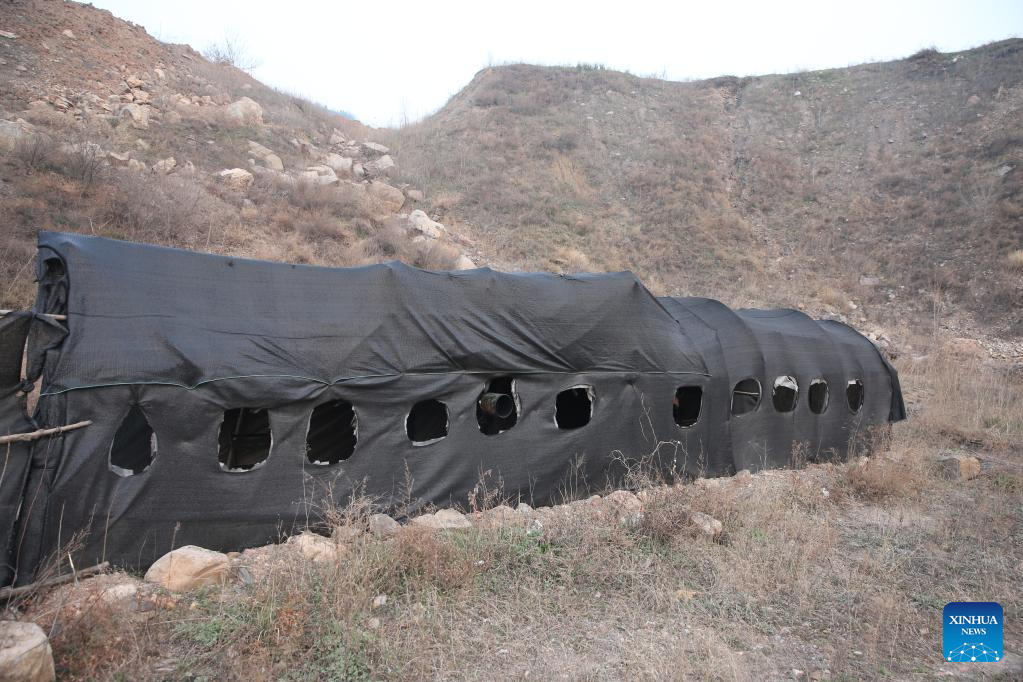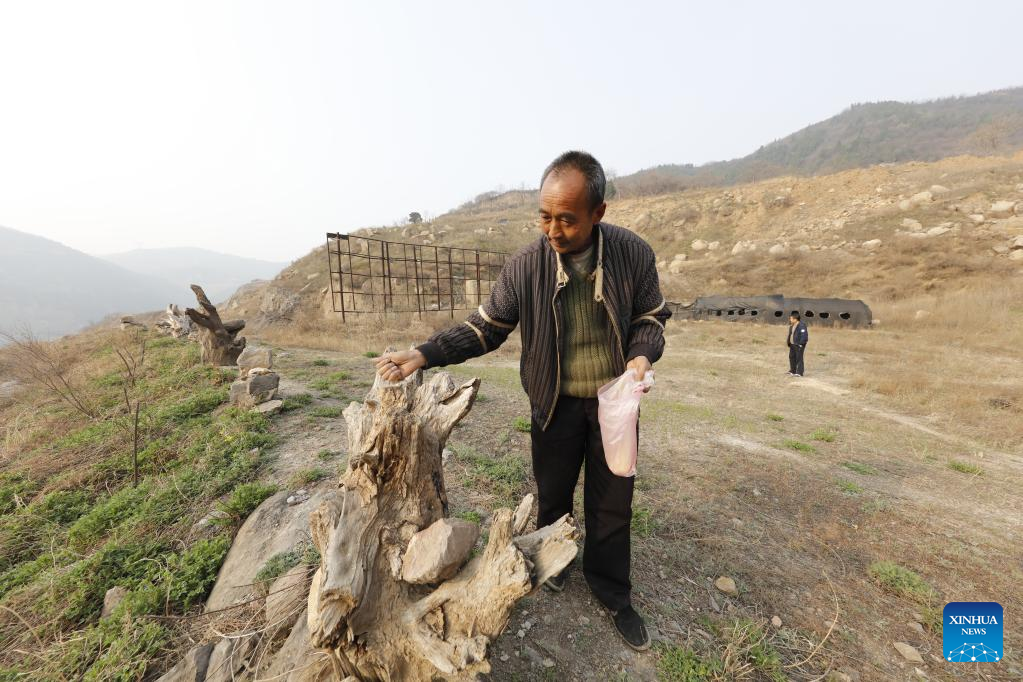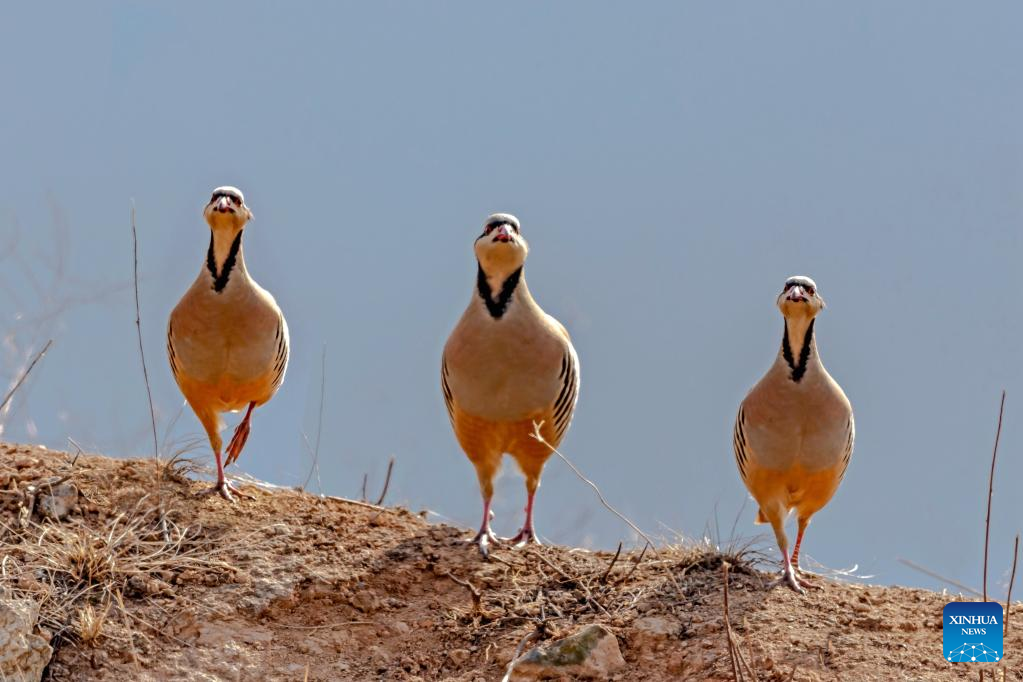Pakistani national bird thriving again in China's Shanxi
Every morning when Yang Jianguo walks out of his home, the morning has barely broken and only the sound of insects and birds can be heard in the deep mountains. For the past six years, the 60-year-old wakes up early every morning and carries a bag full of corn to feed his "little friends," chukars, rain or shine.
The gray-colored creature, distinguished by its coral beak and claws, is smaller than a chicken. During Yang's childhood, chukars could be seen everywhere on the farmlands and hillsides of Qiwan village, Pinglu County, north China's Shanxi Province.
Yang's passion for chukars originated from a chance encounter six years ago. A group of photographers came to Pinglu County to take pictures of birds. During a chat, they learned that Yang had seen chukars before and then asked him to lead the way.
As Yang recalled, the birds were common in Pinglu in the 1950s and 1960s. However, due to the lack of targeted protection, their population declined significantly. After several days of searching, they finally found two chukars in a valley.
Before leaving, the photographers told Yang that this bird was the national bird of Pakistan, and left him some money so that he could take care of the birds and help them settle down here again.
"Keeping my promise is one thing, and on the other hand, I also hope to protect these small animals from the bottom of my heart," Yang said.
It was not easy to feed chukars because they are naturally timid and sensitive. After nearly a month of squatting and observing, he found several chukars in a mountain col.
The next day, Yang began to spread food in the place where chukars appeared, but they disappeared for a long time. Yet Yang persisted, and one morning a few months later, he saw three chukars eating the food he had left the day before. Afraid of frightening them, he lay behind a mound to observe.
"Although I had seen them before, it was the first time for me to see them so closely. Their small and cute appearance immediately captivated me," Yang said.
Gradually, Yang started to hide behind big stones to observe and record the chirping sound with his mobile phone after feeding. As the chukars became familiar with him, every time Yang played the chirping sound, the birds would come out to eat.
It took Yang half a year to gain the chukars' trust. Every morning and afternoon, he fed them twice a day.
From the few chukars discovered at the beginning, to more than 30 of them foraging every day, Yang felt happy to see the continuous population growth. Through the publicity of photographers, more bird enthusiasts are coming to shoot. Yang has become a bird guide, and the photographers always call him "Uncle Bird."
In order not to disturb the birds, Yang built a simple black "photo studio" near the foraging points, and he also built 78 cement steps out of his own pocket.
"Providing help to photographers can better promote animal protection, so that more people will know about them, fall in love with them, and protect them," Yang said.
With the conversion of hillside land to forests in recent years, the local environment has been improving, and the populations of wild animals such as herons and golden pheasants have also been increasing. Pinglu is now one of the go-to sites for wildlife photographers domestically.
In Qiwan village, benefitted by the "bird-watching economy," many villagers are now engaged in running agritainment or homestays.
"I received 1,500 yuan (about 220 U.S. dollars) for returning 0.2 hectares of farmland to forest. Adding my income from agritainment and farming, I can earn an extra 10,000 yuan annually," Yang said.
With this new income stream, many villagers, including Yang's own children, have moved out of the mountains, but he insisted to stay.
"I won't be able to feed these birds once I move out," Yang said, vowing to continue to protect his "little friends," and through his persistence, hopefully more will take up the cause.

Photo taken on March 25, 2018 shows a simple black "photo studio" near the foraging points of chukars built by Yang Jianguo in Pinglu County, north China's Shanxi Province.

Yang Jianguo leaves corn to feed chukars in Pinglu County, north China's Shanxi Province, March 25, 2018.

Undated photo shows chukars in Pinglu County, north China's Shanxi Province.
Xinhua
Other posts by Xinhua
Contact author
blog comments powered by